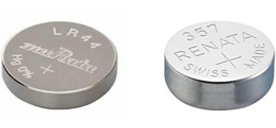Mastering the TL494 IC: Creating a Reliable TL494 Circuit
2024/10/28 12:23:25
Views:
The TL494 IC is a versatile and widely-used pulse-width modulation (PWM) controller, ideal for creating reliable and efficient circuits, especially in applications requiring DC to DC conversion, power supply regulation, and constant current outputs. This guide will cover the essentials of TL494 and provide insights on building robust circuits with it.
ШИМ-контроллер TL494. Зачем нам нужен ШИМ? Понятное объяснение!
Table of Contents
- Understanding the TL494 IC
- TL494 Internal Block Diagram
- Building a TL494 Circuit: Essential Steps
- TL494 Circuit Design
- Conclusion
- Commonly Asked Questions
Understanding the TL494 IC
The TL494 IC was created by Texas Instruments as a PWM controller to cater to different control hardware applications. Its flexibility and strong highlights make it a well known choice among hardware devotees and experts alike.
TL494 Pin

The TL494 IC comes with a standard 16-pin configuration, with each pin serving specific functions. Below are the primary pins used when designing a TL494 circuit:
Key Features of the TL494
Practical Applications of the TL494 IC
TL494 Internal Block Diagram

The internal design of the TL494 reveals a well-thought-out architecture suitable for regulated power supplies, DC to DC converters, and more. Key components include two error amplifiers, a PWM comparator, and a dead-time controller. The TL494 data sheet shows this block diagram in detail, offering a deeper understanding of the IC's internal layout.
Building a TL494 Circuit: Essential Steps
TL494 Circuit Design
When designing the TL494 circuit, you can refer to the sample circuit diagram below.
TL494 Voltage Regulation Circuit

This is a voltage regulation circuit using a TL494 PWM controller. This configuration is often used for regulated power supplies.
TL494 PWM Control Module

This is a TL494-based PWM control circuit. It uses the TL494 PWM controller IC to generate pulse-width modulation signals with adjustable parameters.
High Voltage Inverter Circuit with MOSFET Switches

Usually a high-voltage inverter circuit utilizing MOSFETs (Q5 and Q6, IRFP460) to change over AC input into a high-voltage DC output.
Audio Modulation Plasma Arc Circuit

This is a singing arc circuit using the TL494 PWM controller and an IRF540 MOSFET to drive a flyback transformer, producing high-voltage output.
Conclusion
The TL494 IC remains a versatile and reliable choice for various applications in power electronics. Its ability to handle both voltage and current regulation makes it ideal for TL494 circuits that require stable output under diverse operating conditions. As an affordable option, the TL494 enables hobbyists and professionals to design robust circuits without sacrificing quality.
In summary, mastering the TL494 involves understanding its pin configuration, internal functions, and application-specific configurations. By using the TL494 effectively, you can create circuits that provide reliable, efficient, and stable power solutions across a range of applications. For more information, consult the TL494 datasheet and explore different designs to make the most of this powerful IC.
Commonly Asked Questions
What is the TL494 utilized for in control supplies?
TL494 is utilized for PWM control in control supplies, controlling yield voltage and current, perfect for DC to DC converters and stabilizing circuits.How to set TL494 recurrence?
The recurrence is set employing a resistor (RT) and capacitor (CT) on Pins 5 and 6, flexible between 1 kHz to 100 kHz.What is dead-time control in TL494?
Dead-time control (Stick 4) avoids yield cover, decreasing component stretch in exchanging applications.Can TL494 control consistent current?
Yes, it can be designed for consistent current by utilizing input on yield current, appropriate for Driven drivers and battery chargers.How to select yield mode in TL494?
Stick 13 chooses between push-pull and single-ended mode, giving adaptability for distinctive circuit plans.What are normal applications of TL494?
It's broadly utilized in DC-DC converters, battery chargers, and control inverters.Related Information
-
-
Phone
+86 135 3401 3447 -
Whatsapp





